
There has been a place of worship on the site of the Parish Church for at least a thousand years and possibly for considerably more. The earliest written reference comes from the time of MacBeth, around 1050, when the Bishop of St Andrews gifted Markinch church and its lands to the Culdee monks (Celi Dé) of Loch Leven. We do not know what this earlier church or any of its predecessors looked like but it may have shared the Pictish name Mo-dhrust or St Drostans. The tower that we see today was later built by the MacDuff Earls of Fife, probably in the first half of the 12th century. It is a fine example of Romanesque architecture and its quality reflects the importance of Markinch and nearby Dalginch as the capital place of Fife before Cupar developed that role.
Many masons and other craftsmen worked on the project and almost nine hundred masons’ marks have recently been recorded along with traces of the big wheel-winch that carried the stone blocks up the tower.
At over five metres high the great western tower arch once linked the nave with the tower. In recent years an archaeology project organised by Markinch Heritage Group has gradually revealed sections underneath the modern plaster. Its arch features a unique double set of massive voussoir blocks set parallel to the wall on either side. A decorated frieze that once faced in towards the nave has been chiselled off but a clear cross mark remains on the keystone. This is now incorporated into the Fife Pilgrim Way logo.
During the 12th century, the church’s land, its revenue (20 cheeses and a pig) and later the building itself were all granted to the newly created Priory of St Andrews. The earl later donated nearby land (where Mansefield now stands) to the Priory, and towards the end of the 13th century a local landowner called William de Valoniis of Dalginch added the adjacent glebe to the east of the church along with grazing rights for the gardener who looked after the house. It may well have been a stopping off place for pilgrims as it was exactly half way between Dunfermline and St Andrews. By this time the Culdees had been superseded by a more centralised Roman church which rededicated the church to St John the Baptist. St Drostan’s day (the second Tuesday in December) was, however, recognised as a fair day in Markinch until well into the 19th century.
When Edward I “Hammer of the Scots” passed through Markinch in 1296 the town had declined from Fife’s legal centre of former days. His chronicler referred to the building as a “moustier” or minster rather than a simple church. In the 16th century Markinch was the parish church of David Beaton who went on to become ambassador and Cardinal. He paid for the king’s craftsman to decorate the engraved marble tomb of his parents as well as a chaplain to say mass for their souls. The church would have looked entirely different in these pre-Reformation times with ornamental family tombs and rich decoration. Some say the Cardinal was secretly buried at Markinch.
The old church would have had a high, narrow nave and a smaller chancel separated by a screen and an arch, all probably brightly painted. A piece of this decorated arch was recently found. After the Reformation much of the decorative carving seems to have been removed. The place of worship attached to the tower was demolished and enlarged in two major stages creating the building that we see today. Its elegant Georgian interior would have been a striking contrast with the now lost medieval nave and chancel.
When the building was widened, the walls were reconstructed using the old stone blocks. A stone spire was added to the tower in 1807 along with four pinnacles (now removed) and later in the century the Leslie tomb at the back was converted into a vestibule entry.
The existing bell dates back to 1816 and the clock was gifted to the church in 1929.The church has seventeen stained glass windows. The most recent was installed in 1984 as a gift from Glenrothes Development Corporation.
A team of local volunteers is engaged in a long term archaeological project designed to reveal more about the history of the building. Every year new secrets are uncovered and those interested in joining in are urged to contact the author.
Spiral staircase leading from a ‘hidden doorway’
Markinch Parish Church is a special place. It may be the oldest building in Scotland that has been used continuously since it was built. As a former minister, Alex Forsyth once said “This is the church of the Culdees, the Cardinal and the Covenanter”.
Bruce Manson
bruce.manson@btinternet.com
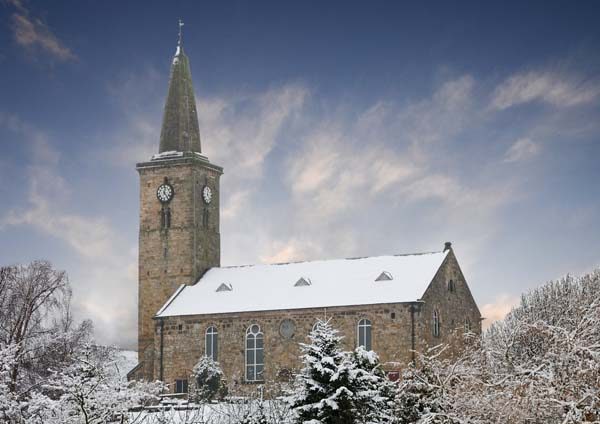
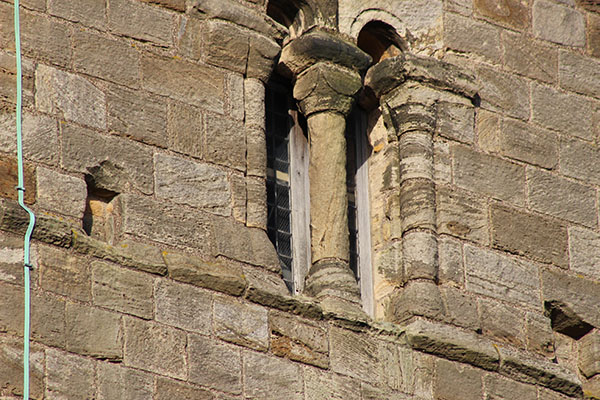
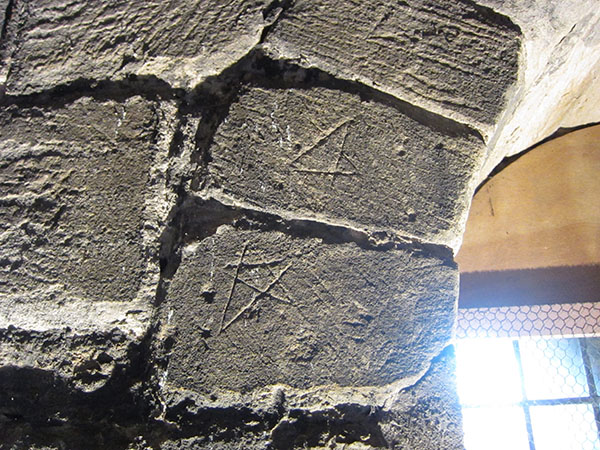
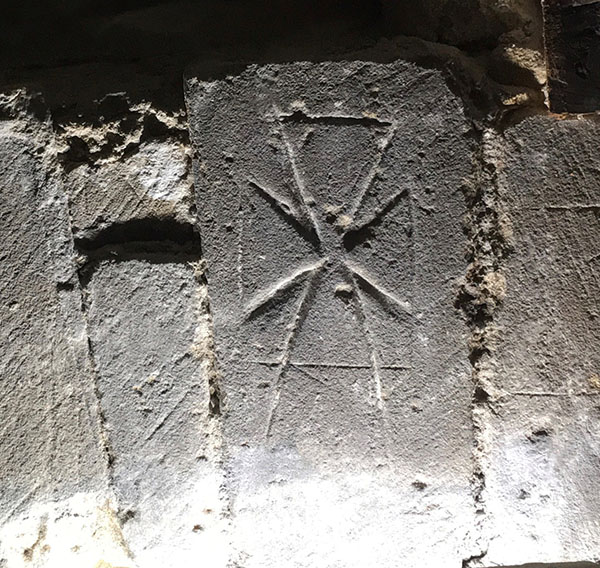
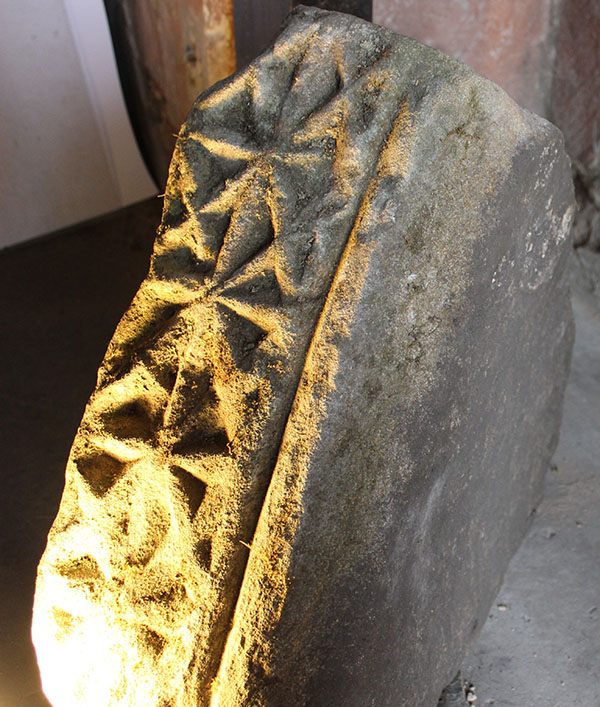
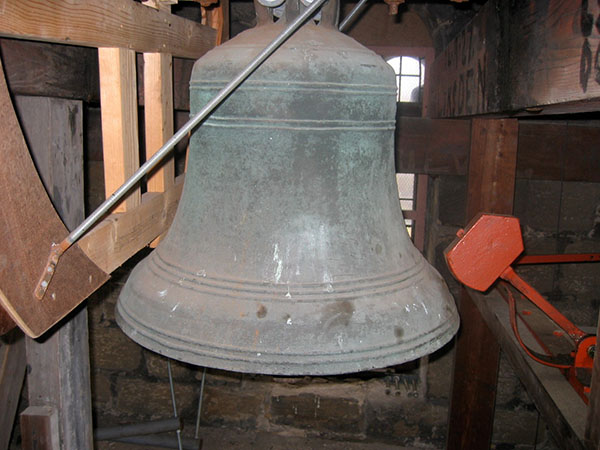
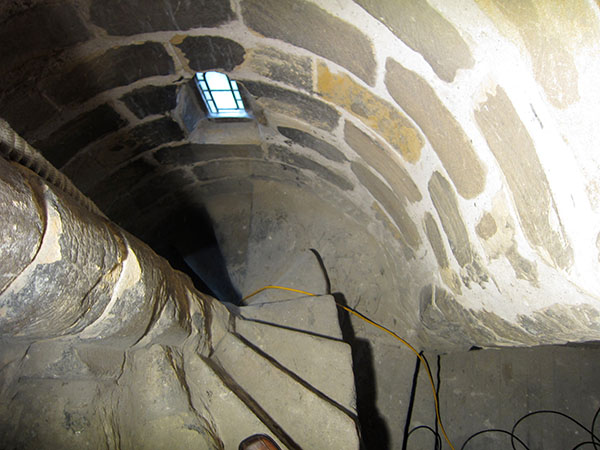
Pingback: War Memorials Inside St Drostan’s, Markinch – A Son of the Rock -- Jack Deighton